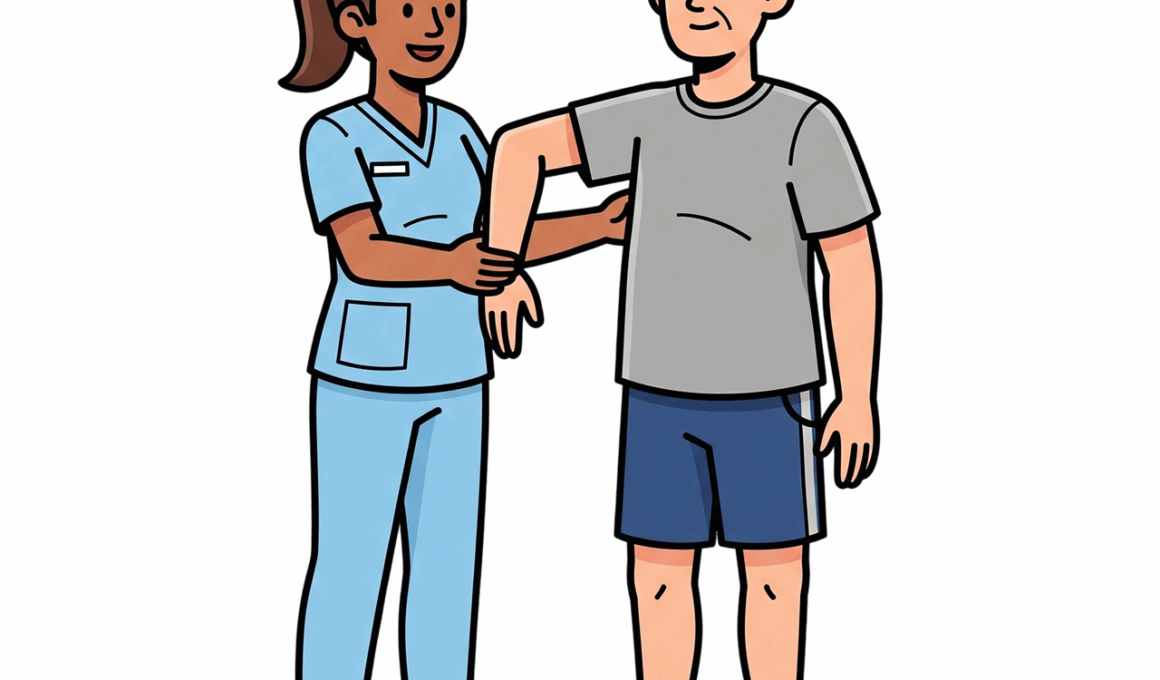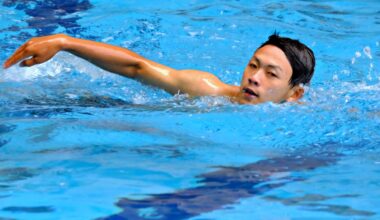Cognitive Training and Its Effects on Coordination in Stroke Rehabilitation
Stroke recovery can significantly benefit from an enhanced focus on balance and coordination. Stroke often disrupts the neural pathways necessary for motion control, which affects coordination greatly. Cognitive training emerges as a valuable tool in this context, aiming to improve both physical and mental aspects of recovery. This dual focus can foster better rehabilitation outcomes. Cognitive training involves activities designed to improve brain function through mental exercises that require concentration and problem-solving. By integrating these exercises into physical therapy routines, patients are likely to improve their coordination. Furthermore, cognitive training activates several brain regions, which can lead to adaptive changes and greater neuroplasticity. Studies have shown that participants who engaged in coordinated cognitive tasks during their rehabilitation exhibited considerable improvements in balance metrics. This highlights the essential connection between cognitive processes and motor skills. As healthcare continues to evolve, the incorporation of cognitive strategies into stroke rehabilitation will likely gain wider acceptance, offering a holistic approach to recovery. Ultimately, enhancing coordination through cognitive skills training may lead to improved quality of life for stroke survivors and their families.
Effective rehabilitation for stroke patients necessitates an understanding of the various factors influencing recovery. Among these, the interplay between cognitive function and physical rehabilitation is critical. The integration of cognitive training can facilitate engagement in rehabilitation exercises, which can lead to enhanced physical outcomes. One important aspect of coordination improvement involves practicing targeted balance activities that challenge the patient’s proprioception and spatial awareness. Coordination exercises may include tasks such as walking on uneven surfaces or maintaining balance in a dynamic environment. Moreover, implementing cognitive tasks while performing these exercises can further amplify their effects. Examples could involve counting steps or recognizing colors along the path. These activities create a more robust challenge, necessitating patients to utilize cognitive resources actively. Additionally, structured rehabilitation programs should emphasize individualized plans that suit each patient’s specific needs and capabilities. By customizing cognitive training and balance exercises, therapists can tailor interventions that maximize engagement and efficacy. Consequently, the blending of cognitive tasks with physical exercises not only elevates coordination but also empowers stroke survivors to gain greater independence and reintegrate into daily routines.
Benefits of Cognitive Training in Stroke Recovery
The benefits of utilizing cognitive training during stroke rehabilitation are multifaceted. First and foremost, cognitive engagement has been linked with enhanced focus during rehabilitation sessions. Patients who participate in cognitive exercises tend to exhibit heightened attention levels, enabling them to absorb instructions better and apply them during physical activities. This improved focus translates into greater success in coordination tasks, which directly contributes to better overall functional performance. Additionally, cognitive training can stimulate greater motivation in patients. Engaging individuals in enjoyable and mentally stimulating activities fosters a positive mindset, essential for effective rehabilitation. Following strokes, anxiety and depression can hinder recovery progress. Cognitive exercises can alleviate some of these psychological barriers, improving overall mental well-being. Furthermore, improved cognitive function may contribute to faster recovery of motor skills. Enhancing mental acuity can lead to more effective motor planning and execution, critical for restoring coordination. Therefore, incorporating structured cognitive training alongside traditional rehabilitation exercises equips stroke survivors with a comprehensive approach to enhancing their recovery process. Such an approach bridges the gap between mind and body, ensuring a healthier return to day-to-day life.
Rehabilitation strategies that combine cognitive training with traditional therapeutic approaches are becoming increasingly common. Many clinicians now recognize that cognitive impairments are often present following a stroke, regardless of the patient’s physical capabilities. Hence, it’s important to adopt a **holistic** perspective that accounts for both cognitive and physical aspects. Almost every stroke patient can gain something from structured cognitive activities. Subsequently, rehabilitation programs benefit dramatically when they incorporate tasks that require multi-tasking and mental challenge during physical exercises. An example could be playing short-term memory games while performing standing exercises. This form of dual-tasking not only enhances cognitive function but also helps in patently increasing balance and coordination during recovery. The integration of technology, such as using applications designed for cognitive practice alongside rehabilitation methods, can further enhance engagement levels. Several platforms offer tailored programs that enable stroke survivors to practice their cognitive skills in a fun and interactive way. Therefore, this approach is particularly beneficial for younger stroke survivors who may require more adaptive methods to connect with rehabilitation efforts. The fusion of technology, alongside cognitive training, represents a layered strategy for effective rehabilitation in stroke recovery.
Challenges and Considerations
Despite the clear benefits, there remain challenges related to the implementation of cognitive training in stroke rehabilitation. One of the primary difficulties is the varied cognitive levels of stroke survivors. Not all patients can perform complex cognitive tasks, so tailoring interventions based on individual capabilities is crucial. Furthermore, healthcare professionals need adequate training and knowledge to administer cognitive exercises effectively. They must be familiar with various strategies to assess and enhance cognitive function within a rehabilitative context. Evaluating the specific needs and limitations of each patient is vital. Additionally, maintaining patient motivation is an ongoing concern. Cognitive exercises should be engaging and suitably challenging to keep the interest alive. Therapists must strike a delicate balance between challenge and achievability. Moreover, logistical challenges arise as healthcare facilities may not have the resources to offer comprehensive cognitive training programs. Collaboration with occupational therapists and other specialists can bridge this gap. Ultimately, these challenges necessitate ongoing research, innovative practices, and a dedication to patient-centered design in rehabilitation programs to optimize stroke recovery through cognitive training.
In conclusion, cognitive training plays a pivotal role in enhancing balance and coordination during stroke rehabilitation. The integration of mental exercises can significantly improve recovery outcomes, allowing stroke survivors to regain their independence and quality of life more effectively. By fostering cognitive engagement through structured activities, patients exhibit enhanced focus and motivation. These improvements in mental acuity translate directly into better physical performance, reinforcing the idea that mind and body are interconnected. A growing body of evidence supports the incorporation of cognitive elements into rehabilitation practices, paving the way for holistic approaches that cater to the varied needs of stroke patients. Furthermore, tailoring these cognitive tasks based on individual preferences and challenges will likely result in higher adherence to rehabilitation protocols. As healthcare advancements continue to evolve, the importance of merging cognitive training with physical therapy will become increasingly evident. Patients and professionals alike must embrace this integrated approach to rehabilitation. The possibilities for growth in this area are vast, offering hope that cognitive training will become a standard component of stroke recovery, ultimately leading to improved health outcomes and meaningful reintegration into society.
Stroke rehabilitation effectiveness can be further amplified by employing community resources. Support networks play a vital role in motivating patients during their recovery journey. Family involvement and community support yield significant psychological benefits, which can enhance cognitive abilities and encourage active participation in rehabilitation activities. For instance, collaborating with community centers that offer group exercises can foster social connections while simultaneously improving motor skills. Engaging stroke survivors in group activities or cognitive classes can also provide them with the camaraderie needed to sustain motivation. Moreover, integrating technology can create innovative ways for exercising cognitive and physical skills simultaneously. Mobile applications offering exercise routines or cognitive puzzles allow patients to practice anytime. Such flexibility enables greater autonomy, allowing users to progress at their own pace. Patients can track their own development, which in turn boosts their confidence. Families should be educated on the significance of ongoing cognitive activities to help reinforce skills learned during formal rehabilitation. By creating a well-rounded support system that merges professional care with community and technological resources, stroke recovery can become a more accessible and successful endeavor.
Final Thoughts
As the understanding of stroke recovery expands, cognitive training’s role becomes clearer and more vital. Therapists and healthcare professionals must acknowledge the unbreakable link between cognitive skills and motor recovery. Through extensive research, insights into innovative rehabilitation methods continue to arise, highlighting cognitive training as an essential aspect. The cost-effectiveness of incorporating cognitive elements into traditional rehabilitation cannot be ignored and indicates an imperative shift towards innovation. Adapting programs to focus on both cognitive and physical aspects may ultimately enhance the quality of care provided to stroke survivors. Continued exploration and adaptation represent key strategies in evolving rehabilitation practices to address the diverse needs of patients. Through collaboration between multidisciplinary teams, effective strategies can be developed that address cognitive deficits while advancing motor function. Moreover, the shift towards embracing cognitive training emphasizes the importance of addressing the psychological and emotional aspects surrounding stroke recovery. As healthcare models evolve, fostering holistic rehabilitation practices will contribute to improved quality of life for stroke survivors, ensuring they receive the multifaceted support necessary to thrive after a stroke. The future looks promising for integrating cognitive training into stroke rehabilitation protocols.


